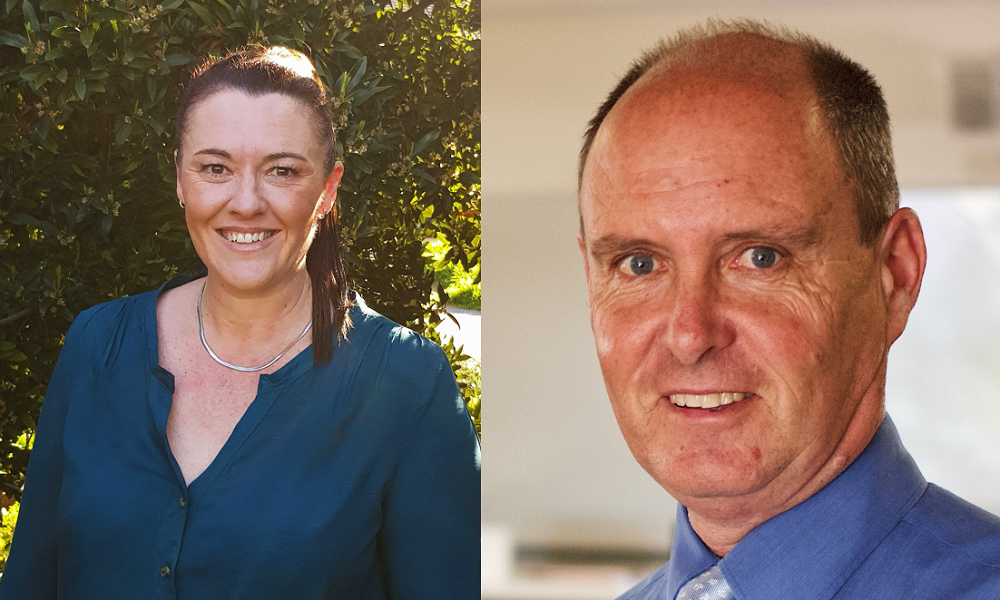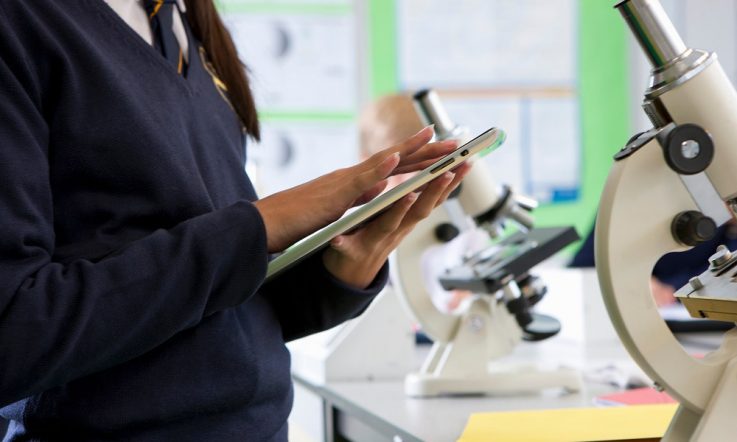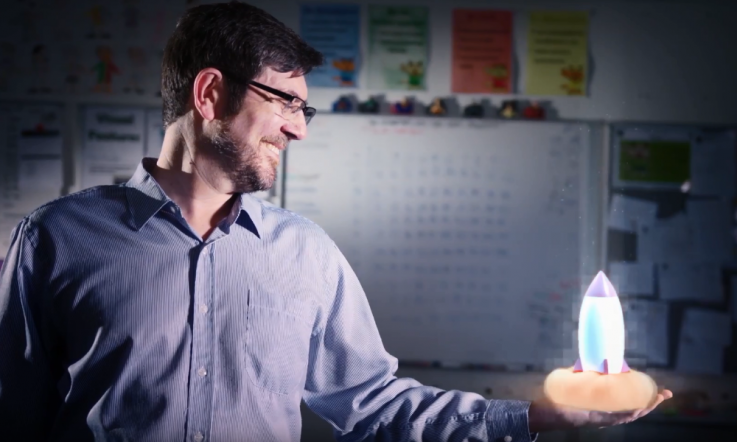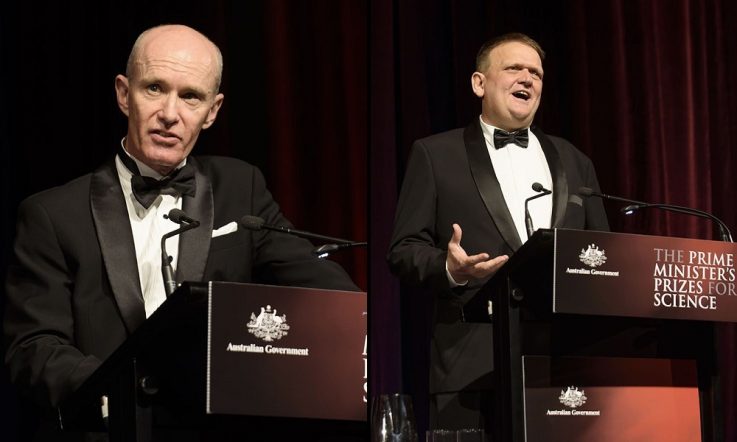This podcast from Teacher is supported by QUT’s Faculty of Education, because the more you learn, the more they learn.
Thanks for downloading this podcast from Teacher magazine. I’m Dominique Russell. In October last year, the winners of the annual Prime Minister’s Prizes for Excellence in Science Teaching in primary and secondary schools were announced. Darren Hamley from Willetton Senior High School in Western Australia and Sarah Fletcher from Bonython Primary School in the ACT were awarded with the prizes, and they both join me in today’s episode.
Darren Hamley, who is the coordinator of Willetton Senior High School’s gifted and talented program, was recognised for his efforts to use science to promote environmental issues, as well as his implementation of several extra-curricular programs. Sarah Fletcher is the STEM specialist at Bonython Primary School and has been recognised for her contributions to STEM teaching, both within her school, and in the wider community. Sarah is also motivated by her view that learning happens most effectively when students have an emotional attachment to the topic.
I caught up with both Sarah and Darren at the end of last year to discuss the work they’re doing in these areas in their own school contexts to improve science learning. First, we’ll hear from Darren, then I’ll take you to Sarah. Let’s jump in.
Darren Hamley: Willetton Senior High School, it’s one of the biggest schools in Western Australia, so we’ve got about, I think it’s about 2600 students and it’s quite an academic school to begin with. So it’s a reasonably high socioeconomic area with a really long history of academic success. And my role here is coordinating the gifted and talented program – which is students that have been identified in the top three per cent in their age group.
… That top group of students is not selected from the school, it’s selected from the state. So there’s a gifted and talented selection branch in central office and they test thousands of students. I normally have about, probably, 2000 students applying for each year group and I take in two classes, so it’s about 2000 people applying for about 60 positions. So it’s very, very competitive.
The testing that they do, it’s a testing of academic potential, not academic performance. So they’re not asking Year 6 kids, you know, ‘what’s the area of a circle?’ or something like that, because they might not have been taught that. So the questions are meant to academic potential. And as a result of that, it’s quite funny, we get some parents that come to me and say ‘hey, I’m really surprised that my daughter got in’ or ‘that my son got in’, but the testing, I believe, is very, very accurate. And those students that are identified, we just try to get the best out of them.
Dominique Russell: And do you have students that, if they’re in this program, does that mean that all of their lessons are part of the gifted and talented program? Or are they only in gifted and talented for science or maths?
DH: No, they’re in for everything. Which is kind of difficult, really, because some students are gifted in science and maths, and definitely not in humanities. But we just have to deal with that. So the students are selected as gifted children, and they’re across science, maths, English and HASS (or humanities) and then for other subjects – languages, Phys. Ed. and things like that, they’re all mixed in with the mainstream kids, which I think is quite healthy to have them mixed in together there. And they’re in the program from Year 7-12.
Another important sort of idea with this is that we can’t kick kids out. So once a student has been identified as gifted, they’re gifted. And if they underperform, I’m not going to boot them out of the program because that would be stressful as well, they’d be worried they’re going to get kicked out all the time. So, once they’re in, they’re in. And if kids are underperforming, we find out what’s going on and what we can do to help that. And I actually employ someone for a day a week to look at results, which is the best thing I’ve ever done. So, I’ve got 360 students in the program – if any student is underperforming in any area, I find out about it. And I will see them and say ‘hey, what can we do to help you?’ They’re not in trouble for getting poor results, and we fix that.
So, for example, a student in Year 11 Chemistry might be normally getting sort of 80 per cent, and they all of a sudden come back with a 60 per cent. And I’ll say ‘hey, what’s going on?’ and they’ll say to me ‘look, I really don’t understand equilibrium equations’. And so then we pay for a tutor, and we get the tutor to basically get them to where they should be.
DR: And so talking just a little bit more closely about the science aspects of this program, can you talk me through perhaps some of the opportunities these students get that are part of this program to do, particularly, with science?
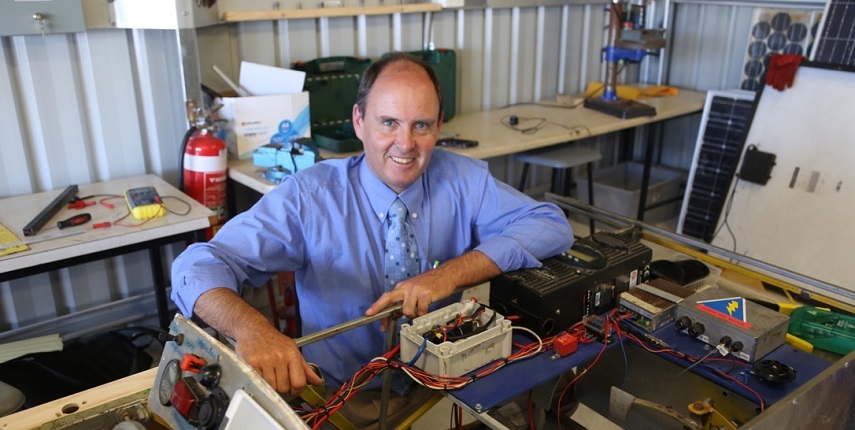
[Darren Hamley. Image supplied]
DH: Okay, our main thrust here is with authentic experiences. Science has changed. I mean, I’ve been a science teacher since 1984, which sounds ridiculous – and we really did, back then, just teach facts, and science was a factual-based area. But things have really changed now, and we don’t need to do that. So I’m more interested in teaching students to be scientists, rather than teaching them just science. We still do some facts, obviously, but it’s that scientific process. And also, that’s what kids want from science – they want to really get their hands dirty. And I think some kids come in from primary school and possibly a little bit disappointed, and I’m really keen on them just getting their hands dirty. And, as I’ve said in a number of interviews that my ultimate aim is for them to go home, burst through the door and say ‘you’ll never believe what I did at school today’. And that’s what we do. And that’s through these authentic experiences.
DR: And I read as well that some of the authentic experiences have quite a bit to do with the environment and conservation, which I found quite interesting. So can you talk me through what those experiences are and why that’s important to you for the kids to learn?
DH: I mean, I’m passionate about the environment. But kids, gifted children – not just gifted children, I’m going to talk about gifted children because that’s what I do – but all children, particularly gifted children, one of the characteristics of gifted children is ethical concerns at a young age. And I think that’s something that we really need to exploit, and a lot of these students do have real environmental passion. The other characteristics that are really common are early reading and an intense interest. So, most gifted students have something they’re really, really passionate about. So it’s that ethical concerns at an early age that I’m really trying to delve into.
... I do a lot of dolphin research. There’s a place about 800 kilometres north of Perth called Monkey Mia which has dolphins that come into the shore and they get fed everyday by the rangers up there. And I volunteer up there a lot. And when I’m in the water with the dolphins, I have a hydrophone attached to my ankle and I take recordings of them. And I’ve taken students up there a number of times, and we’re heading up there in two weeks with students again to get more dolphin recordings.
And we’ve been looking at what we call resting echolocations. So the dolphins echolocate for navigation and for foraging. But they also, when they’re sitting beside me waiting for their fish, waiting to be fed, they just sort of hum this gentle echolocation and that’s what we’re recording. And there’s (I haven’t managed to find anything on the literature in this) what we’re looking at is how the echolocation frequency changes – without anthropomorphising too much – but we’re looking at the dolphins’ state of mind, if you like. And we find that the echolocation frequency is very, very low, and all of a sudden it goes from 40 Hz up to as high as 400 Hz and then suddenly drops off again. And what’s happening, it’s when the dolphins see a fish with their eyes – not with their echolocation, they see a fish with their eyes – they get excited (I shouldn’t use a word like excited, but they get excited) and this echolocation frequency spikes and when I hand them a fish, it’s ‘ah’ and their echolocation drops off again. And it’s really, really original research that the students are doing and there’s just something about working with dolphins that we all love and these kids just think it’s fantastic.
The other dolphin research we’re doing, is there is a number of dolphins in our Swan River here that have had fishing line entanglements and I have taken photographs of those dolphins. We then make 3D models of them, they’re 1/8 scale models and I’ve got a big drop tank at school here. We drop those models down this tank to work out the degree of drag that is experienced by varying damage to their dorsal fins; and it’s very significant. So a reasonably small cut in the dorsal fin that makes it flop to the side, has an enormous effect on the performance of their swimming. And this is to encourage people to basically stop leaving fishing line lying around the river.
DR: And I also read as well that you’ve got a bunch of extra-curricular clubs that are based on science at the school. So I’m interested then in how you decide which of these extra-curricular clubs you get off the ground running, and why they’re successful with the students there?
DH: Okay. Look the reason this started was because as the coordinator of the program I’m sort of also in charge of the social welfare of these students. And walking around at lunchtime, there’s a lot of my kids that find a little nook in the school and they’ll there sit by themselves and maybe read, or basically just sit there. And lunchtime for some of these kids is the longest half an hour of their life. So I’ve actually got a club every lunchtime – and it’s not just for these kids that have trouble making friends, but that’s how it started.
And it really just started by word of mouth, but our school also holds at the beginning of the year a club day where, at lunchtime, all of the school clubs are on display in the quadrangle. And they have students at the desk and they are explaining to everyone what they do at these clubs. They sound really daggy, but they work. So I’ve got, on Mondays I have a dolphin club and we try to raise awareness about pollution in the river causing damage to their dorsal fins, there’s one thing we do there. And next week we’re going out to a primary school and we’re talking to a Year 1 class about dolphins and doing a little dolphin craft activity with them, just to raise awareness with these kids as well, and they’re really excited about that.
I have, on Wednesday I have chess club, which we have up to about 50 students playing chess which is fantastic, and we’ve won state-wide tournaments with that as well. I do a Rubik’s cube club, which is one of my favourites, I love the Rubik’s cube. And the students here practise different algorithms to reduce their times.
DR: I’m interested then for other teachers who are listening to this episode who might be interested to setting up a really successful and robust gifted and talented program, what are some good things to keep in mind?
DH: It’s a funny way that it started. Going back, way back to 1992, it was my first year at this school. And my principal [at the time], who was a real innovator, he was quite a gruff, grumpy man at times, he saw me at recess, I think it was about the second last day or maybe even the last day of the year, and he said ‘Hamley, I want to see you in my office straight after school’. And I thought ‘oh, no, what have I done?’ because he was telling people off for having their hair too long, and all sorts of things you’d get in trouble for. And I went to his office and he said ‘son, I like what you do’. He said ‘I’m going to give you 0.2 off,’ so a day off a week, next year, for a project. So, I said ‘what’s my project?’ and he said ‘what I want you to do is come back in 12 months’ time and tell me how wisely you’ve used the 0.2 I’ve given you’.
Absolutely bizarre, I mean you couldn’t do that nowadays, it was sort of in a biblical sort of way almost. So I went away over the holidays and I thought ‘what could I do with this 0.2 to impress my principal?’ and so I came up with the idea of having a gifted program. So I started as an after school club. We would meet in a little demountable classroom just after school once a week. And the way we started was doing competitions – so maths competitions and science competitions, generally. And rather than just getting good students to enter competitions, what we did was, we did training. Just like a person would train for a race, when we were doing a maths competition, we trained, and we trained really hard. So, I got old copies of tests and we went through these meticulously and we worked out strategies and we went in these competitions and we won them, we won just about everything we went in because of the training, and plus I had good kids.
And from there, that started getting into the newspaper, and then more people wanted to join the club. And then the school said, ‘hey, this is too good to run after school, we need to do it in school, in class’. So we replaced science with talented science, we called it. And then after a few more years, that became embedded across the curriculum and now I’ve got 360 students in the program and I’ve got 19 staff – so it’s grown from strength to strength.
So in the beginning, what I would concentrate on is advertising, just like a business would. And so it’s, the local newspapers are really keen for good stories – we were in the paper probably every second or third edition of something that these students were doing, and then people would say ‘hey, I want to come to this school’.
Coming up, we’ll hear from Sarah Fletcher from Bonython Primary School in the ACT, but first, here’s a quick message from our sponsor.
You’re listening to a podcast from Teacher magazine, supported by QUT’s Faculty of Education. QUT’s postgraduate courses in education now give you more options to take your knowledge and confidence to the next level. Custom build your own qualifications by choosing to specialise in areas such as inclusive education, leadership, First Nations education, trauma-aware schooling, and more. Make an even bigger difference in the classroom with a postgraduate course in education from QUT.
Sarah Fletcher: Okay, so I’m the STEM specialist at Bonython Primary School in the ACT. Bonython is a true inquiry school – so the entire school operates from a lens of inquiry. We use Kath Murdoch, we work with Kath a lot, and I think it’s probably the first school that I’ve ever been in who say that they’re inquiry, and actually are, to the point that, as teachers, we are allowed to conduct our own professional learning in an inquiry manner which really allows us to tailor it to ourselves, which is amazing.
So my role is that I address the aspects of the science achievement standards that the classroom teachers don’t. So things that are difficult to fit into your general inquiry, and it’s usually things around your physics and your chemistry, and astronomy, geology – things that don’t naturally fit into their class inquiries. Because, obviously I can’t address the whole of the science curriculum in, sometimes, under an hour a week. So, just adding to what the teachers are doing.
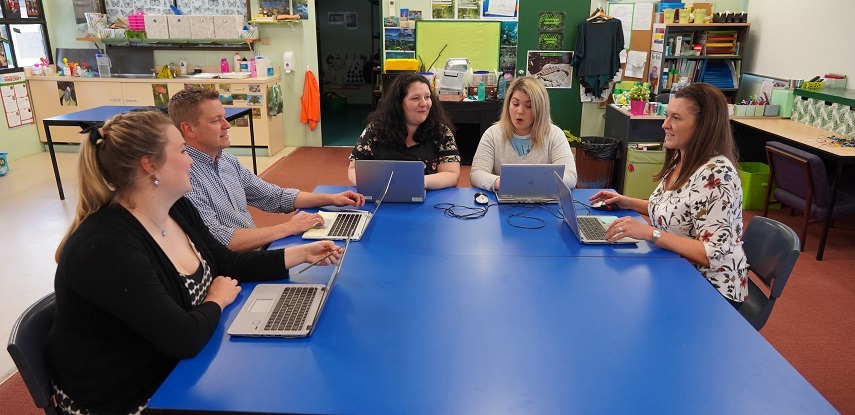
[Sarah Fletcher. Image suppled]
DR: So the next thing that I found really interesting was you mentioned that real learning can happen when students have an emotional attachment to what is being taught. So, from your perspective, why is an emotional attachment so important and beneficial for students?
SF: I think it’s true of all learning. And it’s to do – I worked with some neurologists around this – and it works to help create those myelinated fibres which entrenches things in memory, but especially with science. Because you think about how they have gained their existing understanding, and it’s from a personal, direct experience. And so just telling them something is not going to change that, because you telling them won’t change their personal experience. So they need to have an experience which challenges any misconceptions that they have, and they then need to experience that new way of thinking for themselves or it’s not going to change their mind because, as I said, nothing is more concrete to them than what they can see, feel, think, hear, from their own perspectives. So, you can talk until you’re blue in the face, but you’re not going change any misconception unless they have an experience that challenges that.
… I always tell people, they always think that my favourite science lesson is going to be something explosive, but it’s not. My favourite is actually, it came from out of one of the Primary Connections units, but it’s when we’re looking at the states of matter at a young age. And the kids have this misconception that air is only around us if you can feel it, if it’s blowing on you or… and so you basically just give them a freezer bag and they collect air, and they get so excited – ‘oh I found air under the desk!’ ‘I found air in the cupboard!’ They will literally do that for days and then just tell you all of the places that they found air, and that would have to be my favourite lesson of all time, and all it takes is a freezer bag.
DR: Fantastic. And on emotional attachment as well, in terms of learning, I’m interested then in, have you had any experience in using that with reluctant learners in particular. Is that something that’s particularly useful for those learners?
SF: Look, I think with, I’m really lucky, I’m teaching a subject that kids innately want to be part of. So the reluctance, I think, comes from being able to communicate what they’re learning and, I mean, because just by its nature, kids can’t help themselves getting involved in science. They literally they just try, even if someone comes in a cranky mood going ‘I’m not going to do that’, they can’t help it, they start getting involved.
But it’s that, giving them facility to show their learning in multiple ways. And this is something I’m really passionate about because I have a son who’s in Year 5 and he’s severely dyslexic, but he’s also incredibly intelligent. And in the achievement standards in the National Curriculum it doesn’t actually state that you need to show something in writing until they’re in their later years of primary school, and that’s only one aspect. So I think people look at things the wrong way – so, for an example, to look at the assessment I recently conducted for my 5/6s around electricity, my assessment was a photo of the circuits they created in their shoebox hats.
And so I think it’s giving them that opportunity, and I will explicitly state this to kids: ‘I am not assessing what you’re putting on your page right now, so if you’re having trouble getting your ideas out, I’m happy to video you, I’m happy to scribe for you’, and I think that gives the reluctant learners that freedom to just breathe. You’re not assessing, you’re not assessing their writing all the time, and if you can get that clear to them.
But I think also creating a space where it’s okay to make a mistake. So I like to use Leonardo da Vinci during his time when he was creating the first ideas of helicopters and other sorts of new technologies, everyone thought he was mad, ready to commit him to an insane asylum. But without those, what people often see as silly ideas, there’s no innovation.
So creating that space of there’s no such thing as a wrong answer in science, because science fact is just what we know right now, it changes, it’s not a static thing. So without people taking risks, without people making mistakes, we would never have anything new. And creating that safe space for kids to speak up without fear of ridicule or someone saying ‘oh no, you’re wrong’. I think that’s probably a big thing for the reluctant learners as well.
DR: I saw that you worked to develop strong relationships with other local schools in your area to give power to that cross-age mentoring. So can you describe what’s meant by cross-age mentoring for me?
SF: …The reason why I started down that road was because I was in a primary school and there was this real disjoint for kids with what the various levels of education provided. And so that’s where I started the ANU enrichment event and it was six primary schools working with mentors from their feeder high schools. In the ACT we have [Year] 7-10 and then we have separate colleges, 11 and 12. And then using the college students as communications people, and then we work at a University for the day.
So it’s getting that conversation happening between the kids about ‘oh, what do you do in science at high school?’ and ‘oh, what do you do at Uni?’ And just showing them that progression and then they then take that information back to their schools and I think it just, it gets the information out there. Because unless you’ve had a parent or an adult in your life who has got higher education or who has obtained a degree, then there is a lot of confusion, I think particularly the language used in television with the American system calling University ‘college’. I had a lot of kids thinking that you go to college or Uni …
And so it was partly that, but also just to show them that there’s more scope to choose. So, for example, I’m taking my girls STEM enrichment group to our local college for the day just to, so they’re observing a Year 11 Physics class and then they’re – and I’m a bit excited, because we’re delving back into my field of science, where we’re going to be doing some stomata density slide viewing. That’s the holes that lets leaves breathe, which is something that I did as part of my evolutionary genetics studies. And just letting them see what it’s like, because I think there’s a period within science education where kids can get bored, to a degree, and just saying, ‘well, we don’t always get to do exactly what we want to do, but the longer you push through the more scope you have to individualise’, I guess. So, creating that transparency of the education process, not just for them, but for their parents to understand too.
… So I think, particularly being an inquiry school, you tend to steer away from things that stay the same all of the time. You create those relationships and contacts on a needs basis – and that makes sure that it’s relevant, and it’s not just a thing that we do because we’ve always done it.
DR: And another thing that may come into this – I’ve seen that you’ve been labelled as an ‘innovative’ and an ‘imaginative’ educator. So do you have some examples of why that might have been a label for you?
I think just because I have a problem; when I try to think simply, I can’t. So, the ANU enrichment event started as a, my principal said ‘why don’t we get the kids going to the local classroom?’ and I said, ‘no, let’s take them to ANU, and let’s get the high schools involved and let’s invite lots of schools’. And I just, I don’t know when to stop I think is part of it. But also, I’m not afraid to pick up the phone. And you know, in the early days of me doing this, I’d probably get 15 knockbacks for every ‘yes’ that I got. But now it’s the opposite, so I have people contacting me (‘do you know any schools that would be interested in this?’). And I think we’re really lucky in Australia because a lot of our big institutions are creating education resources and I think the reason I was labelled with the innovative label is because I hunted those down in the early days and created a forum to share that. And I’m pushy, I don’t take no for an answer. So, I think that’s sort of part of it.
And just changing the mindset. So a big thing for me was looking at science in primary – I personally believe that’s when you need to get kids hooked. It’s too late in Year 10, and I found a lot of the outreach programs were only targeting Year 10 students. By that time, if they then choose to do science in Year 11 and 12 but they haven’t done advanced maths, then they’re out of the running of a science degree immediately. So, that was my argument to them, and I was just really fortunate that some of my contacts from my university days at ANU were in the hierarchy then. And so they allowed me to sort of get the foot in the door.
… I think my advice for teachers when they’re developing the science within their school is to make sure that they’re doing two things – and that is to be able to connect what the kids are learning to their real life experience, but also to build on skills. And I think it’s essential that once those skills are built, you need to create a problem solving situation. And it can be as simple as – when I’m looking at the states of matter with my Year 1/2s, the problem solving situation is I present them with a bucket full of dirty water that has liquids, solids, liquids of different densities mixed (like oil and water). Now that we know what we know about the states of matter, how can we solve this problem? That’s a real life problem.
… So what the higher [education] institutions are telling me that’s lacking in the students upon entry at a university level is that problem solving capacity – the grit to work through a problem and not necessarily get answers the first time, and be able to work through, well, what are we doing that we can change to fix that? And that is in the achievement standard, all the way through, in the science at the primary level, yet I think it’s the thing that people miss teaching the most, because they get so wrapped up in teaching that content. Whereas in my mind the content is just the driving force to deliver those thinking and working skills that are crucial in science.
So, I think if I was helping anyone set up their school science program that would be my driving force, is to make sure that they have built that into it, because that’s what our kids really need.
That’s all for this episode. If you’d like to hear from previous winners of the Prime Ministers Prizes for Excellence in Science Teaching, we’ve spoken with 2019 winners Sarah Finney and Samantha Moyle, 2018 winner Brett Crawford and 2017 winners Brett Mckay and Neil Bramsen in past podcast episodes. You can find the links to these three episodes in the full transcript for this podcast, which is published at teachermagazine.com. While you’re there, be sure to sign up to the free Teacher bulletin, so you never miss a story.
You’ve been listening to a podcast from Teacher, supported by QUT’s Faculty of Education, because the more you learn, the more they learn.
Sarah Fletcher says: ‘creating that space of there’s no such thing as a wrong answer in science … without people taking risks, without people making mistakes we would never have anything new.’
As a science teacher, how are you encouraging your students to take risks in their learning? How do you create a safe environment where students don’t feel afraid to speak up and share their ideas?
